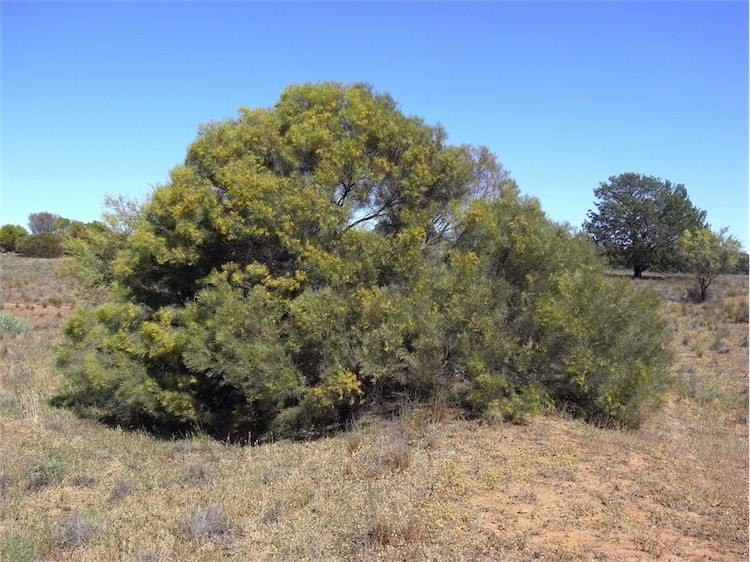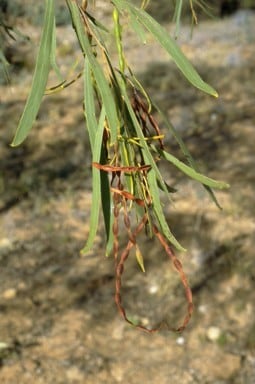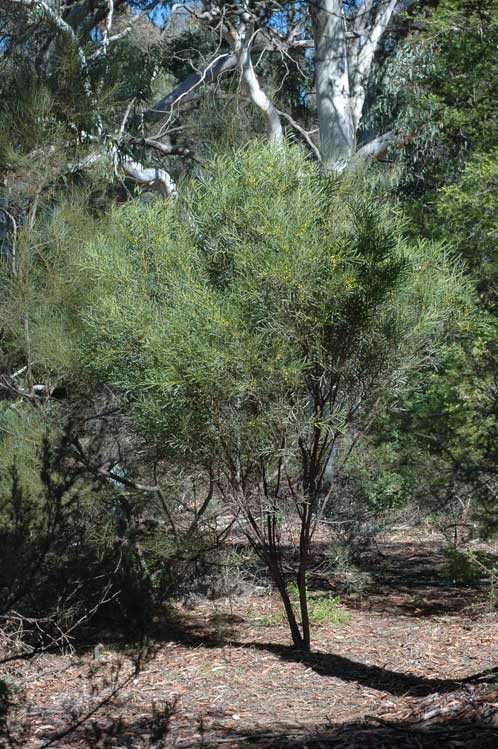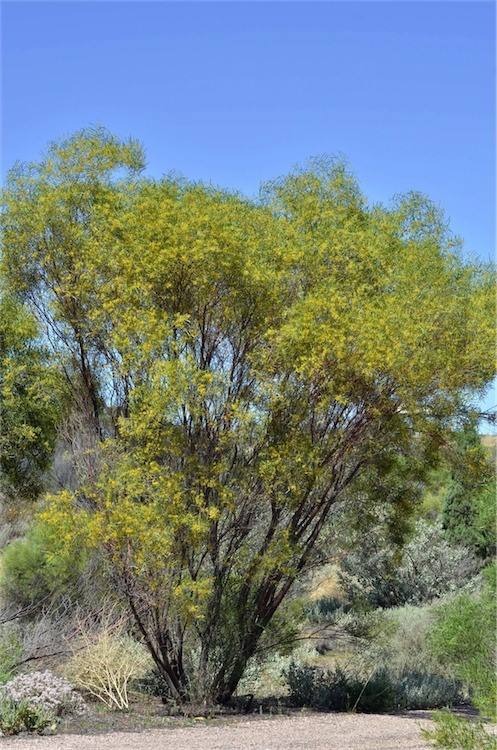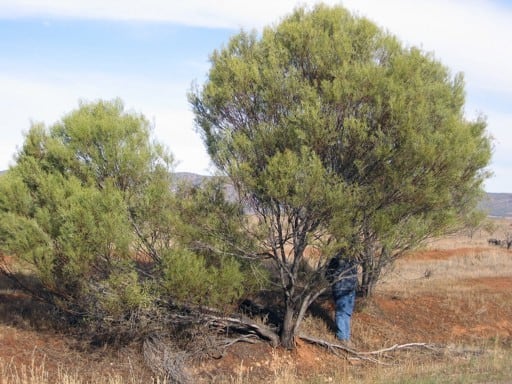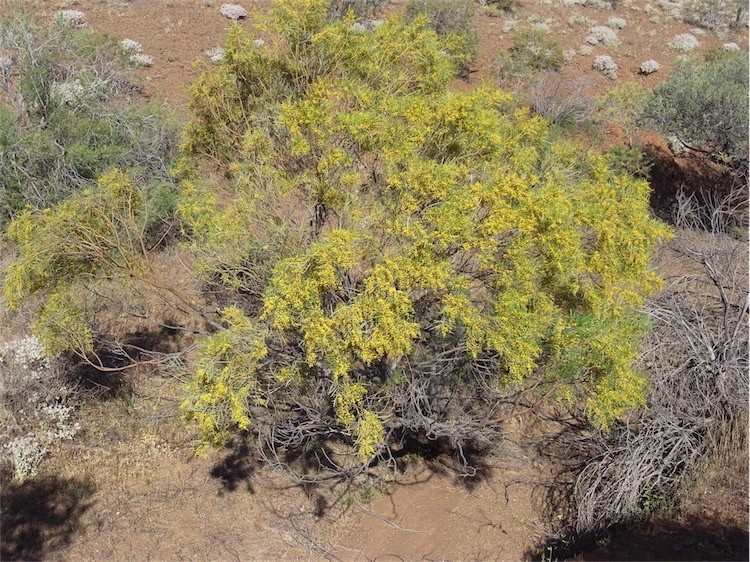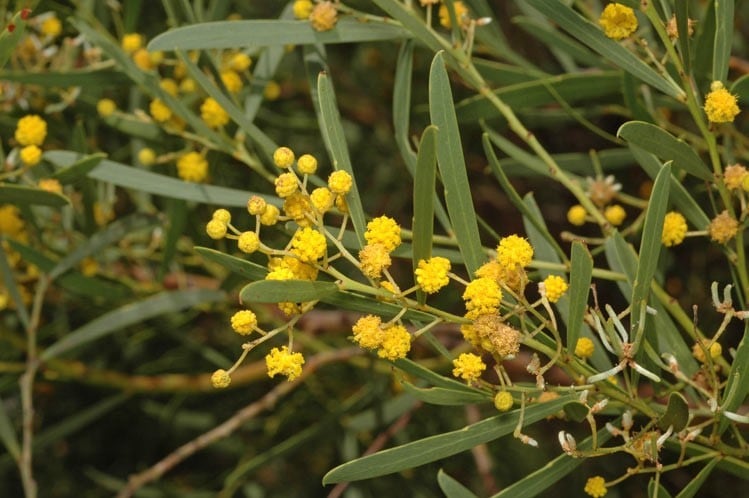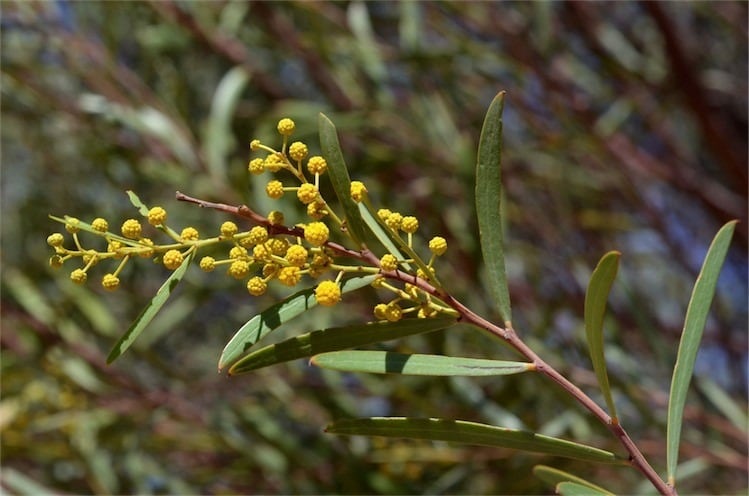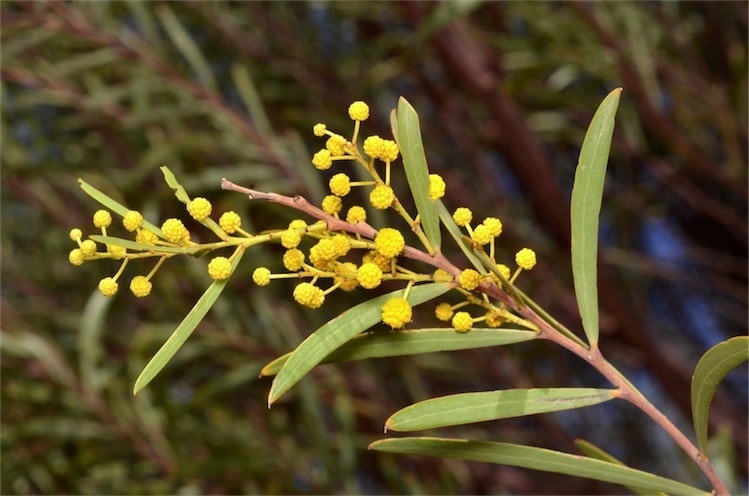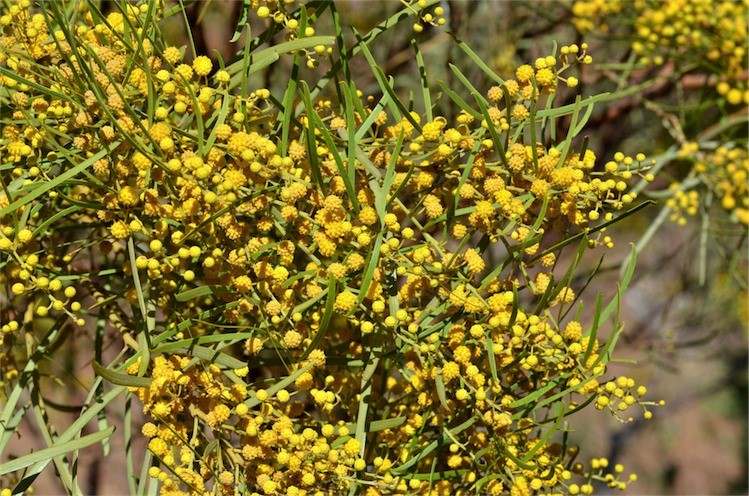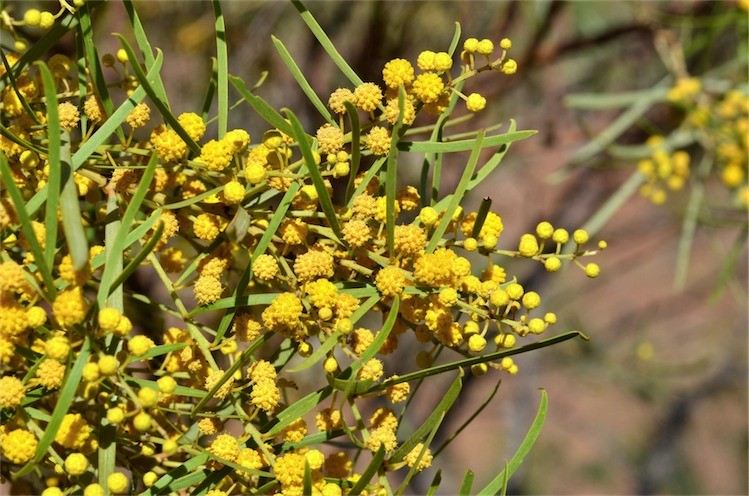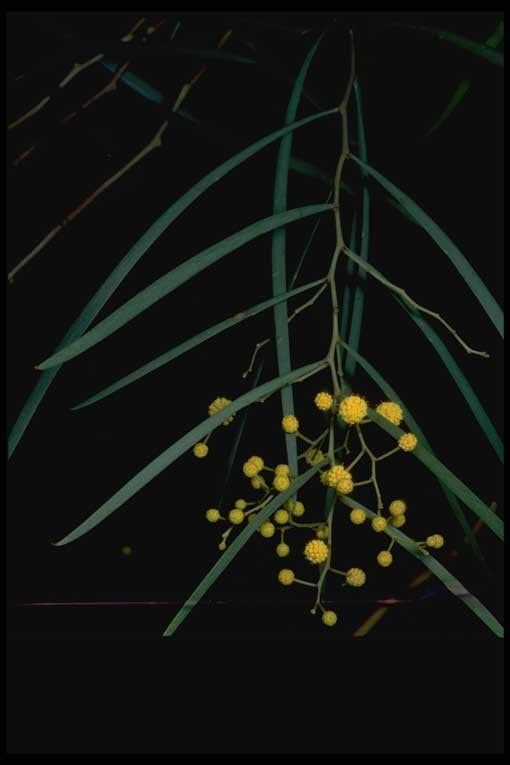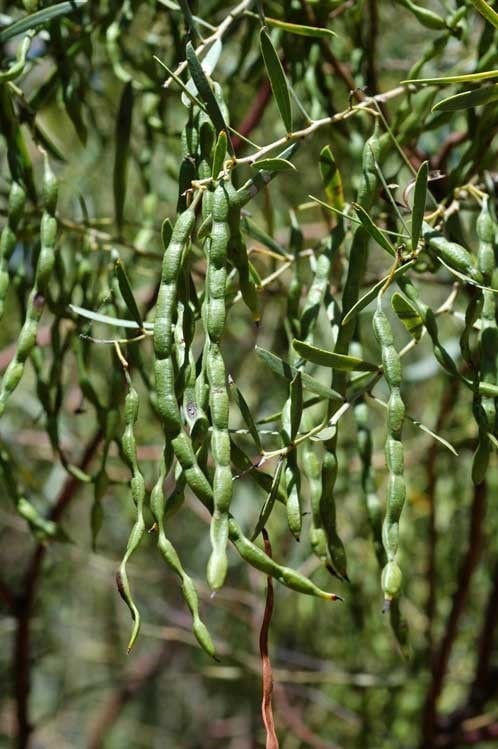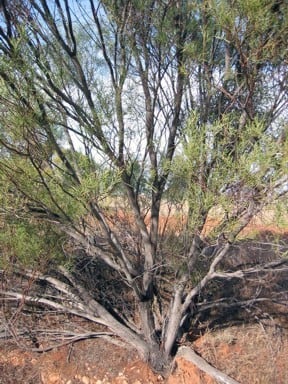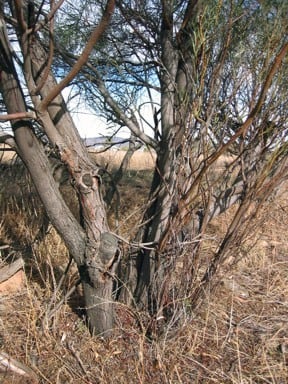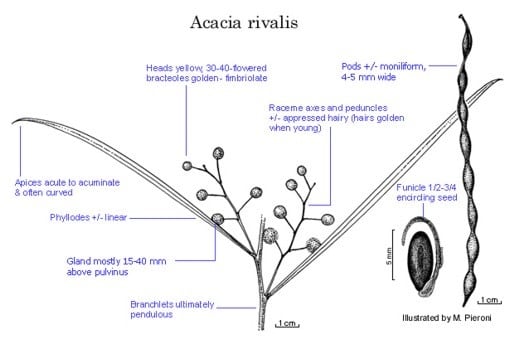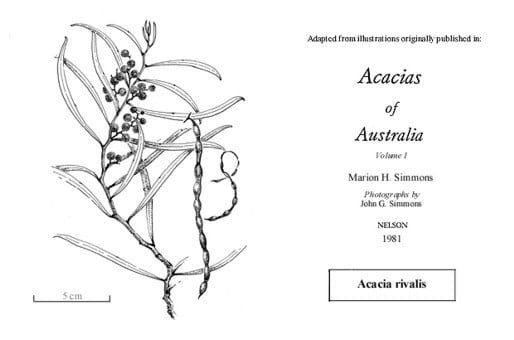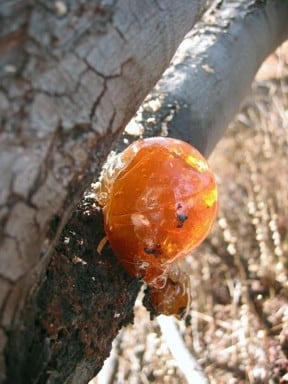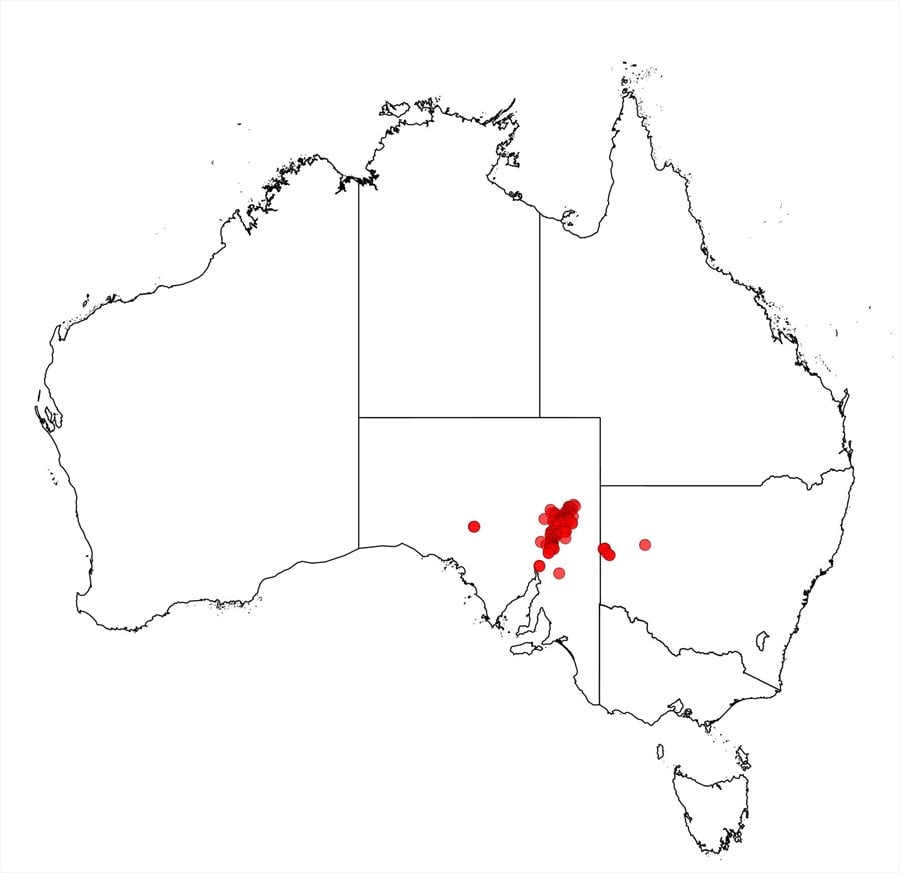Acacia rivalis J.M.Black
WATTLE
Acacias of Australia
Common Name
Silver Wattle, Creek Wattle
Family
Fabaceae
Distribution
Occurs in S.A. from Hawker N to near Mt Harris, North Flinders Ra., and also near Lake Bring and Wilgena, c. 500 km to the west. Recorded from near Broken Hill, N.S.W., but possibly not native there, fide S.W.L.Jacobs & J.Pickard, Pl. New South Wales 150 (1981).
Description
Obconic shrub or tree 3–5 m high; crown bushy and domed. Branchlets ultimately pendulous, normally glabrous. Phyllodes ±linear, (3.5–) 4–14 cm long, 2–5 mm wide, acute to acuminate and often curved towards apex, thin, glabrous, 1-nerved per face, finely penninerved; gland (5–) 15–40 mm above pulvinus. Inflorescences racemose; raceme axes 2–5 cm long, slender, sparsely to moderately appressed-puberulous, with hairs dense and pale golden when young; peduncles 4–12 mm long, with indumentum as on raceme axes; heads globular, densely 30–40-flowered, bright yellow; bracteoles bright golden-fimbriolate. Flowers 5-merous; sepals united to near apex, with lobes bright golden-puberulous. Pods ±moniliform, to 16 cm long, 4–5 mm wide, firmly chartaceous to thinly coriaceous, glabrous. Seeds longitudinal, oblong to elliptic, 5–6 mm long, ±dull, black; funicle 1/2–3/4 encircling seed in a single fold, red-brown; aril clavate.
Habitat
In S.A. the species grows in tall shrubland on ridges and rocky shaly hills or along watercourses, in shallow calcareous loam.
Specimens
S.A.: Balcanoona, near Nudlamutana Well, Hj.Eichler 19642 (AD, K, MEL, PERTH); near Lake Bring, Commonwealth Hill Stn, B.Lay 791 (AD, PERTH). N.S.W.: Mundi Mundi Ck, 8.5 km N of Umberumberka Ck which is 35 km NW of Broken Hill, I.B.Armitage 976 (NSW, PERTH).
Notes
Information on the biological and ecological features, and the utilisation potential, of this species is given in B.R.Maslin and M.W.McDonald, AcaciaSearch: Evaluation of Acacia as a woody crop option for southern Australia, RIRDC Publication No. 03/017, 190–193 (2004).
A member of the ‘Acacia microbotrya group’ which possibly hybridises with A. araneosa in the northern part of Flinders Ra., S.A. Also related to A. retinodes which is distinguished by its often wider, normally oblanceolate to narrowly oblanceolate phyllodes with the gland 1–10 mm above the pulvinus, glabrous raceme axes and peduncles, and linear pods 5–7 mm wide.
FOA Reference
Data derived from Flora of Australia Volumes 11A (2001), 11B (2001) and 12 (1998), products of ABRS, ©Commonwealth of Australia
Author
Minor edits by B.R.Maslin & J.Rogers
B.R.Maslin
This identification key and fact sheets are available as a mobile application:
URL: https://apps.lucidcentral.org/wattle/
© Copyright 2018. All rights reserved.
